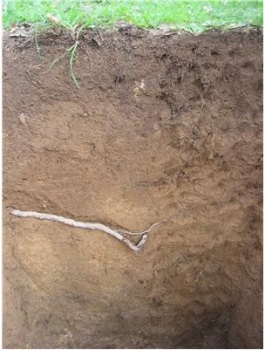A study brought out in the latest issue of Nature journal unveils the mystery of how certain organic compounds survive hundreds and thousands of years in soil while most of them quickly decay.
 Soil Profile. Credit: Max Planck Institute of Biogeochemistry
Soil Profile. Credit: Max Planck Institute of Biogeochemistry
The research undertaken by Michael Schmidt from University of Zurich and Susan Trumbore from Jena located Max Planck Institute of Biogeochemistry hint ways to better the current capabilities in forecasting how soil carbon reacts to changes in climate, use of land and vegetation change. The study dispels the myth that organic matters remained in the soil due to their intricate molecular structures, which posed problems for organisms to decompose.
The researchers have utilized latest advancements in imaging techniques to image the molecules in soils to various lab tests that evidence the breakdown of specific compounds to prove their views. The research asserts that the duration of carbon stay in soil is mostly dependent on the interactions between the surrounding soil system and the organic matter. They explained that the elements such as moisture conditions or adverse local temperature, safeguarding of molecules by physical structures like aggregates or minerals, recycling or physical isolation bring down the likelihood of decomposition in certain molecules.
Though there are around 40 million bacteria cells found in a gram of soil they normally inhabit in lesser than 1% of the existing quantity and often flocked in hot spots. They are found in places that are away from the roots or deep soils where the microbial population is meager in number and they normally take a longer duration to get decomposed and in other places freezing weather conditions slows down the microbial action.
The research assumes importance from the point of view that most of the currently available examples forecast how the soil carbon react to climate change and comprise low level of understanding on the physical forces and utilizes components such as temperature reliance to point out quicker level of decay in warmer places. The present views suggest for a greater importance to temperature in accelerating the decay than the other factors. The researchers brand this approach as lacking in subtlety and insight and suggest that their current findings can be formed into models to better the present ability to forecast how soil carbon reacts not only to climate changes but also to vegetation change or land use.